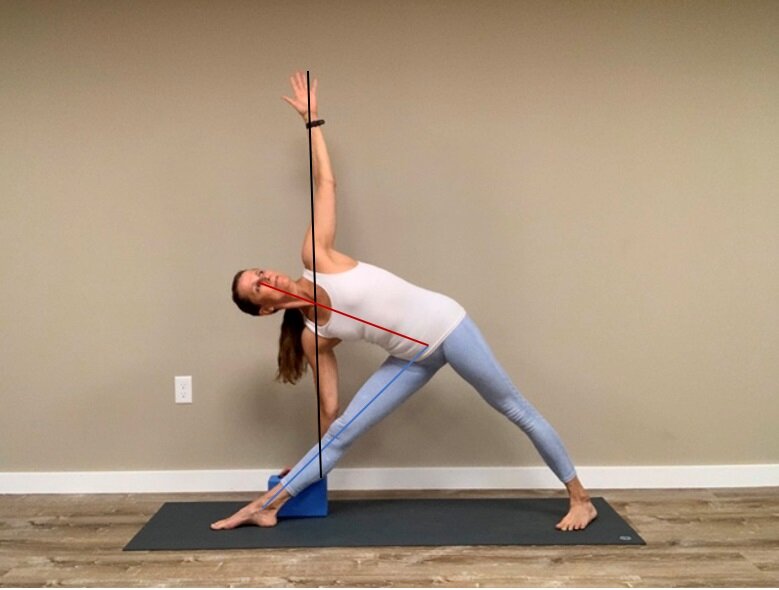Last week, I said: "In yoga practice we should not bypass any part of ourselves." This is a something that comes from one of my teachers.
But what does it mean?
It means to pay attention as you move into an asana. How far can you come into an asana before you misalign? It asks us not to push pass that part and ignore it.
There is a lot of learning to be done right at that point where you start to lose the alignment. Is it strength? Flexibility? Is it impatience to get somewhere? Is there a better place to be than here?
Pausing there and working there is what yoga is all about. It is not about achieving the poses, it is about falling in love with practicing.
For instance, some people look at a picture of Trikonasana and think that the important thing is to get the hand to the floor.
“I’ve been to the floor and back and God is not in the floor.” ~ Ramanand Patel
But can you keep the legs straight and the front hip moving into the body as you extend your torso out over your legs?
Are the sides of your trunk as well extended in Trikonasana as they are when you are standing up in Utthita Hasta Padasana?
When I was in college, (I went to Art School) I had an Industrial Design Professor who used to say to us:
“Develop and infallible technique and put yourself at the mercy of inspiration.”
~ Richard Schultz
In asana, alignment is the infallible technique. What is the cost of misalignment?


